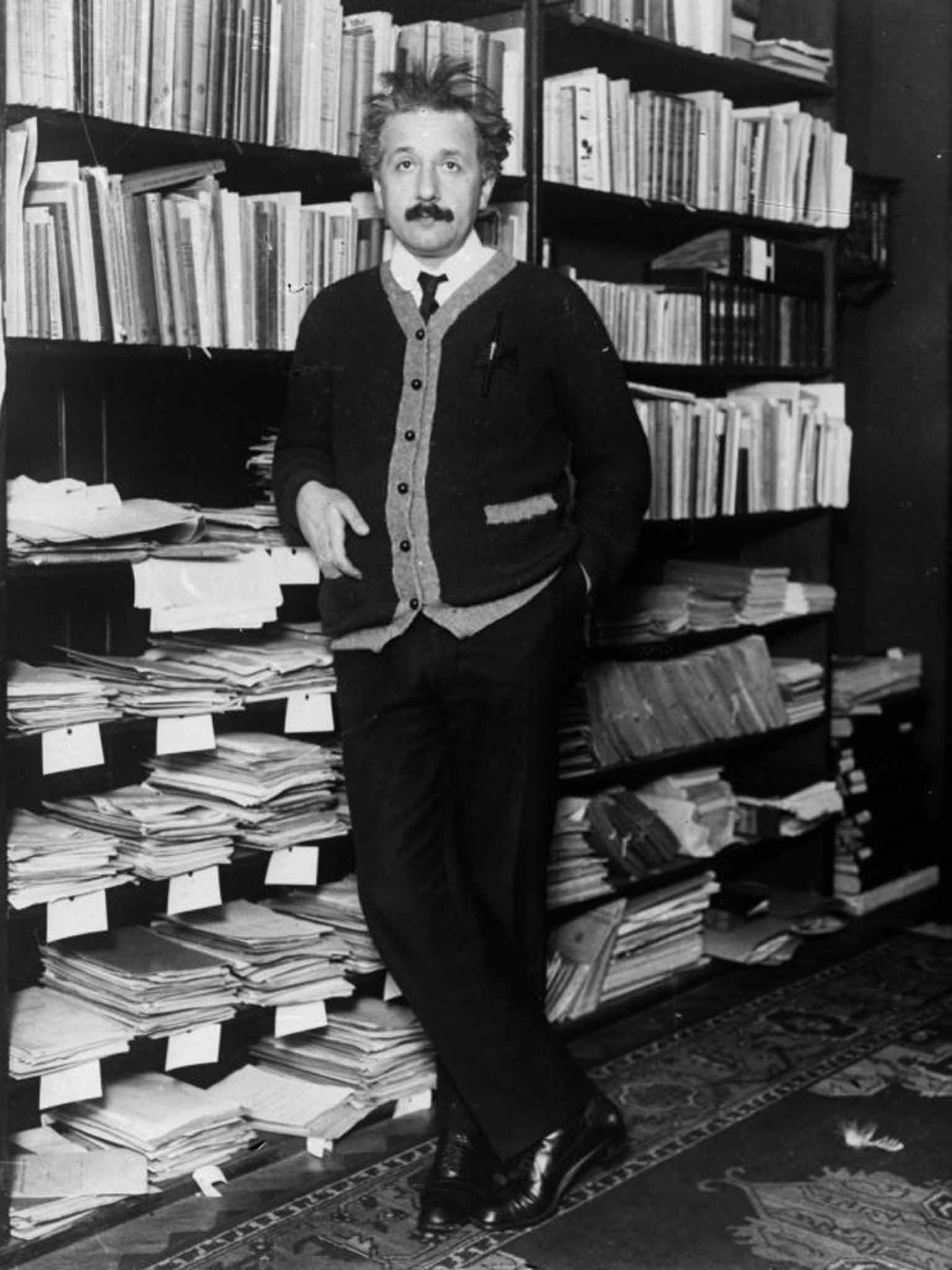Short stories celebrating Einstein: 'I Am Because You Are'
One hundred years after Einstein altered our view of the universe, a new collection of short stories is a fitting tribute to his creative genius

On the afternoon of 25 November 1915, Albert Einstein gave a lecture to the Prussian Academy of Sciences about his new general theory of relativity, and our universe changed from a static arena for the consideration of science to part of the experiment itself.
Einstein's reputation as a revolutionary thinker is testament to the way he was able to formulate and solve formidably complex problems using imaginative approaches known as “thought experiments” – experiments that were too outlandish to be carried out in real life, but which could be used to make logical deductions about our world. He populated the abstract landscapes of his theories with people and everyday objects such as trains, clocks and torches.
The results often read like short narratives. In his famous “man in a lift” experiment, devised to probe the nature of gravity, a man is trapped inside a lift with no way of seeing out as he freefalls towards Earth. Einstein deduced that the man would feel weightless. Then, he wondered how the man would feel if the lift were floating in outer space. In that situation, the man would also feel weightless; so, without being able to see outside the lift, the man is not able to distinguish between the two scenarios.
When I realised that the 100th anniversary of Einstein's lecture would fall this year, an anthology of specially commissioned short stories seemed a suitable celebration. It also felt appropriate that this sort of commemoration would be outside the scientific orthodoxy. Some of the writers who signed up (such as Andrew Crumey and Helen Sedgwick) have backgrounds in physics, but the majority had not been exposed to anything beyond weights and measures at school. I contacted Professor Pedro Ferreira – the author of The Perfect Theory, published last year – who organised a workshop with physicists at the University of Oxford, where the writers could learn about relativity and Einstein himself.
One of Einstein's first developments in relativity was to demolish the idea of universal causality by showing that it isn't possible for two observers travelling at different speeds to agree on the order in which events happened. This was mirrored in the early 20th-century literature's rejection of the traditional omniscient narrator – think of TS Eliot's The Waste Land and Virginia Woolf's To The Lighthouse. This theme is also explored by some of the writers in our anthology. “Eclipse” by Andrew Crumey is told from the alternating points of view of two lovers as they disagree about their relationship during a solar eclipse. Their attitudes are cleverly related to the precise alignment of the Moon, Sun and Earth – because an eclipse, just like a relationship, looks quite different depending on your perspective.

After examining causality, Einstein turned his attention to gravity. Isaac Newton's apparently straightforward equations describing the gravitational force between objects had dominated the science since the late 17th century. This universe is impeccably logical and yet it was all created with smoke and mirrors. As Newton himself admitted, he couldn't explain what gravity actually was; it was a mysterious force operating instantaneously across the universe.
In contrast, bold thought experiments led Einstein to conclude that gravity is actually a distortion of space caused by objects, such as stars and galaxies, embedded in it. Perhaps the most profound implication of this is the realisation that the universe is dynamic, ever-changing and expanding. Vanessa Gebbie's funny and surreal story, “Captain Quantum's Universal Entertainment”, depicts this expanding universe as a dilapidated circus tent filled with “patches of darkness that seem almost elementary, full of strange possibilities”, where “The Great Maximilian” spins plates under the watchful eyes of dwarves, “sadly smoothing infinite grains of sand”. One extreme consequence of Einstein's theory was realised very soon after 1915; black holes, objects so dense that space-time is curved right around them, stopping anything – even light – from escaping their orbit. And finally, and perhaps most unsettling of all, came the realisation that much of the universe appears to exist not as ordinary matter but as a form of “dark energy”.
These consequences proved inspirational for our writers. Lynsey May, for example, uses black holes as a metaphor in “The Cosmos in a Paper Cup”, in which a terminally ill girl struggles to come to terms with her isolation from friends and family, just as a black hole becomes cut off from the surrounding space: “I am not a bright star, snuffed out too soon… I know that eventually the universe will stretch and resettle and carry on without me.”
Einstein's personal life was complicated, too. He changed his nationality several times – from German to Swiss, then back to German, before finally becoming American – and his first marriage (to Mileva Mari, the first woman to study physics at the Zurich Polytechnic) ended when he had an affair with his cousin Elsa. All this proved rich pickings for fiction. In Stuart Clark's “Scatter and Trend”, Einstein speculates on his relationships, trying to work out what goes wrong every time he visits his ex-wife; he contrasts it with the practical difficulties of the famous solar eclipse experiment, conducted by Arthur Eddington in 1919.
And the title of the collection? Nothing summarises the interdependence of mass and space-time better than the Ubuntu philosophy of “I Am Because You Are”. As Einstein proved, none of us exists in splendid isolation.
'I Am Because You Are, an Anthology of Stories Celebrating the Centenary of the General Theory of Relativity', edited by Pippa Goldschmidt and Tania Hershman (£8.99, Freight Books) is out now
Join our commenting forum
Join thought-provoking conversations, follow other Independent readers and see their replies
Comments
Bookmark popover
Removed from bookmarks